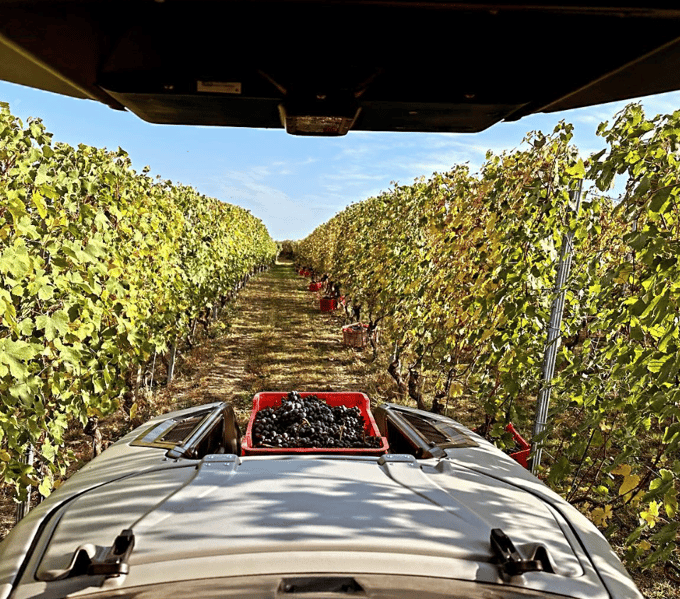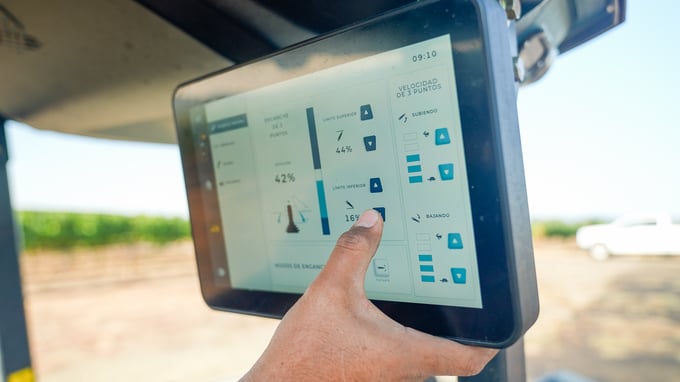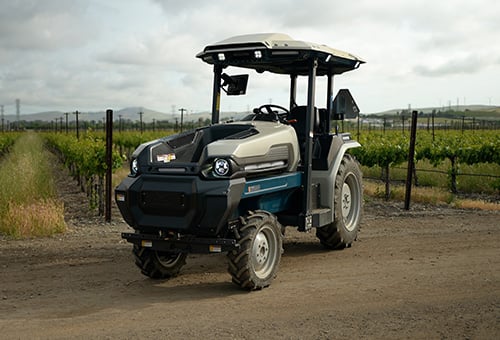by Carlo Mondavi
Chief Farming Officer, Co-founder Monarch Tractor
After years of unprecedented drought in California, this past winter delivered one like no other. The relentless back-to-back storms bringing cold rains with snow at low elevations and a record level snowpack in the Sierras was a much-needed however particularly challenging winter.
Such excessive weather events beg the question, what do these extremes mean for our farms? From a macro perspective, this weather was a net benefit to California, but how each farm fared was largely influenced by how it was farmed and its location.
Climate Resilient Farming
Climate resilient farming is the art of preparing one's farm to be successful against increased temperatures, changes in precipitation patterns, and extreme weather events. With today’s extreme weather patterns, winegrowers, like many farmers, are faced with even greater challenges than the generations before us.
In the wine world, when we talk about the quality of a wine we talk about the quality of a site, how and when that site was planted, how that site is farmed, and how mother nature releases her energy on that site over a full year. While all these elements help determine a wine's quality level, weather is the most unpredictable and challenging. In addition to the weather being outside of our control, all four seasons leading up to harvest impact the vintage quality.
Preparing a farm for climate resilience is key to successful outcomes. With these preparations, a farm ecosystem is better set up to handle both idyllic and challenging weather events across all seasons. I believe the same care that helps prepare our farms for drought resilience also helps us navigate excessive rains like those we experienced this winter.
Weathering the Extremes
This year (winter and spring of ‘22 - ‘23) brought exceptional levels of rain and snow. Those farms that were out of the flood plains and implemented climate resilient farming practices thrived while those that followed more conventional practices faced greater challenges.
Nonstop Rain
Farms that benefited from the excessive rains the most were those that employed no-till or minimal-till farming practices. This approach involves minimal disturbance of the soil and allows the grasses to remain intact which also helps increase organic matter and soil health.
Studies show that each percentage of organic matter in your soil is equal to absorbing 1-inch of rain per hour. When you till and use conventional practices your soil’s organic matter is .5% or less. In contrast, the soils of well-stewarded, no-till farms can easily have 3% - 8% organic matter, allowing for the farm to absorb 3 - 8 inches of rain per hour. Not only does this retain and protect precious topsoil from erosion, it also helps build future topsoil.
Piles of Snow
Snow means cold and farmers LOVE the cold during winter. A cold winter (consistent temps below 50°F and ideally colder days around freezing point but not below or –5°F), allows our vines and perennial crops to go into a deep dormancy known as the “chilling period” giving them the chance to rest from the previous season and build up the energy, health, and strength for the season ahead. I like to think of our vines as hibernating bears, who also depend on a cold winter to set their biorhythms. Similar to bears, vines slow their metabolic activity and stop growing. However, there are still some important physiological processes happening in the grapevine during this period. One important process that occurs during dormancy is the accumulation of carbohydrates in the grapevine's woody tissues. These carbohydrates are stored as reserves and are used to support new growth and fruit production in the spring.
A cold winter, like this winter in California, is also vital to killing many of the pests and diseases that harm our crops. With the recent string of warm winters these pests have not been killed back enough and, as a result, have been more problematic for farmers. This recent winter’s cold was incredibly helpful in correcting this issue and I’m hopeful this coming year will offer some reprieve from disease pressure.
This cold, wet winter also delayed bud break by two to three weeks, which will also delay flowering. Flowering is a vital time that helps determine yields. When it arrives closer to summer, the risk of damaging weather is lower. This means we should have a beautiful flower set and yields. In comparison, our flower set was a disaster last year due to the warmer, dryer winter and early bud break followed by an unseasonable cold snap.
Cascading Problems or Cumulative Benefits?
A farmer’s answer to what the excess rains and snow meant for their farm likely hinged on their farming practices. For my farm, which is regeneratively farmed (no-till plus organic), the rains were absorbed on our fields and our vines are doing great. We use Monarch MK-V tractors, so our mowing and operations were safer for our team and had zero carbon emissions.
For Monarch Tractor and our customers, the abundant rains mean they will have more grasses to mow this growing season than they’ve had the past three years. It also means the benefits of being all electric will be appreciated even more. They will enjoy savings on fuel costs, savings on their carbon footprint, healthier air and operational efficiencies all while making their farm more resilient to these types of events in the future.
A healthy planet, a healthy farm, and healthy farm profits — farms can play a restorative role in protecting crops, soils, and our planet. Let’s make that the norm for farming so future generations can continue to do what we all love so much.
Onward to a brighter future for all,
Carlo
I’m a farmer and a winemaker, not a businessman. I founded my Sonoma Coast winery, RAEN, in 2013 with my brother, Dante. Our hands and heart are in the soil, vines, and environment where our wines grow. Like all farmers, we are hyper-focused on the relationships between weather, ecosystem health, and high-quality crops. Shortly after starting RAEN, I launched The Monarch Challenge: a movement advocating awareness to protect and nourish our farm biology via our planet’s soils, waterways, our farm teams, and the interconnected web of biodiversity. All farmers care deeply for their land and will do anything to protect the value it holds.




